Christ the Redeemer
In the two days we had in Rio, we hit most of the landmarks. We were staying on Copacabana Beach, so the location was ideal. We started off at Christ the Redeemer, atop Mount Corcovado overlooking the city of the Rio. It sits in the middle of the Tijuca National Park, which is inside of the city of Rio. It is the largest urban forest in the world. The statue was completed in 1931 which surprised me that it was so recent. It stands 98 feet tall, and the arm span is 92 feet. A chapel sits at the base of the statue consecrated to Our Lady of Aparecida, the patron saint of Brazil. There was a baptism going on as we walked around the statue. We were driven nearly to the top of the mountain and then took two escalators to the statue. No stairs to climb. The statue is impressive as are the views of the city all around. When we had finished at the statue, our next stop was the Stadium
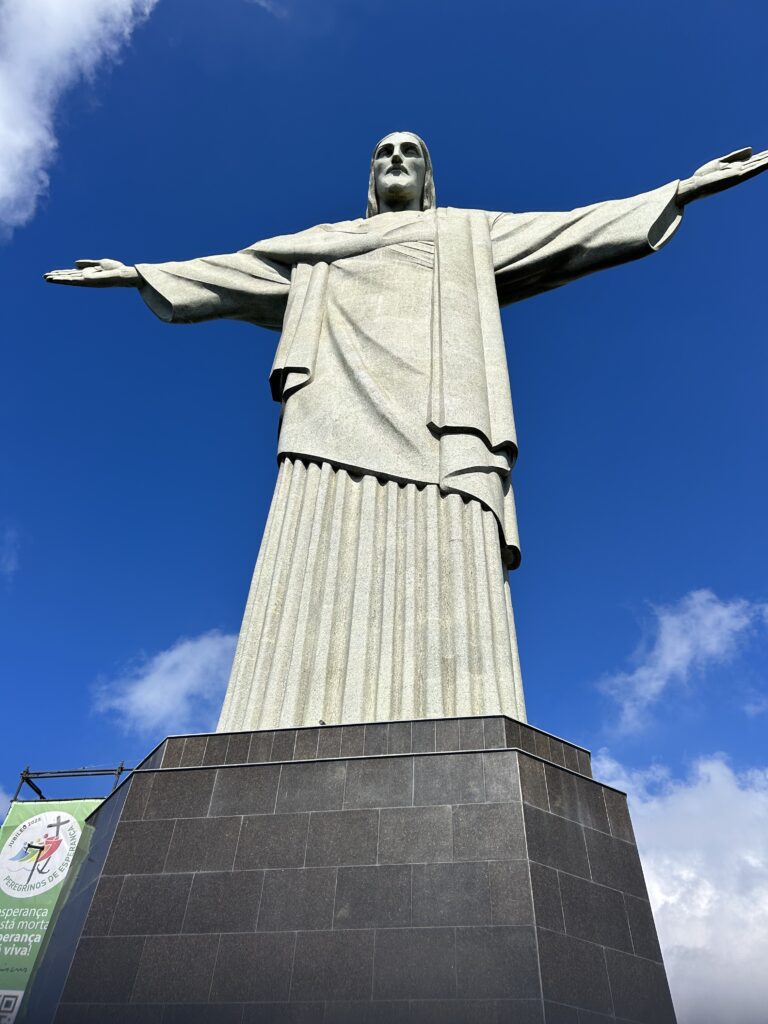
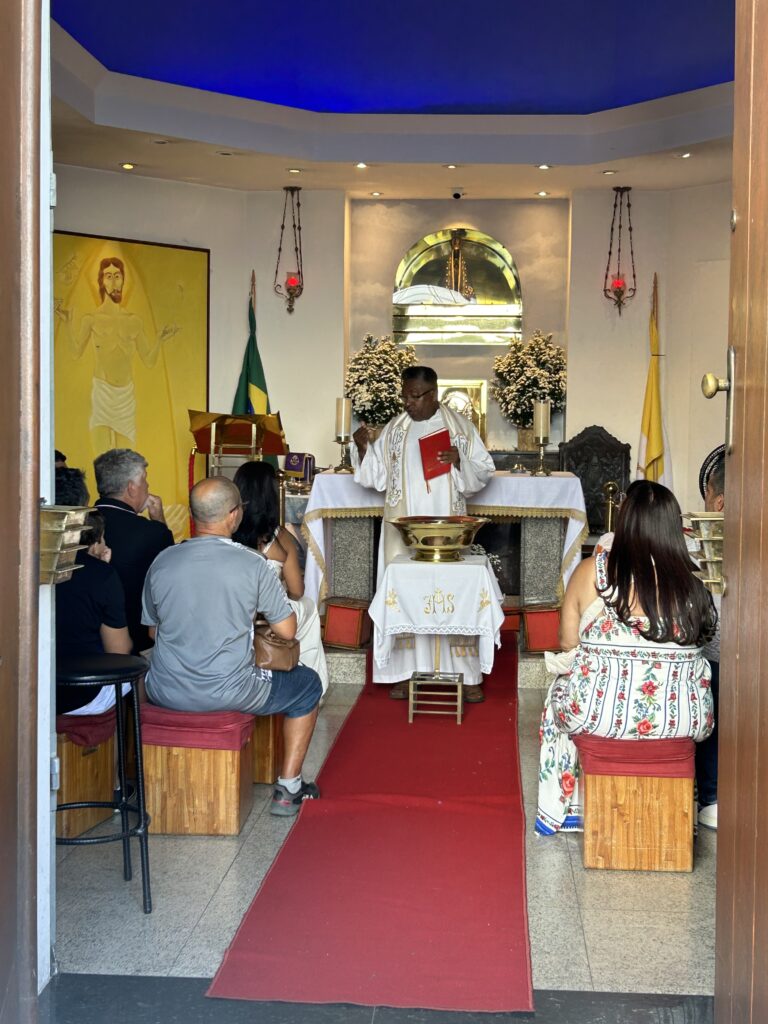
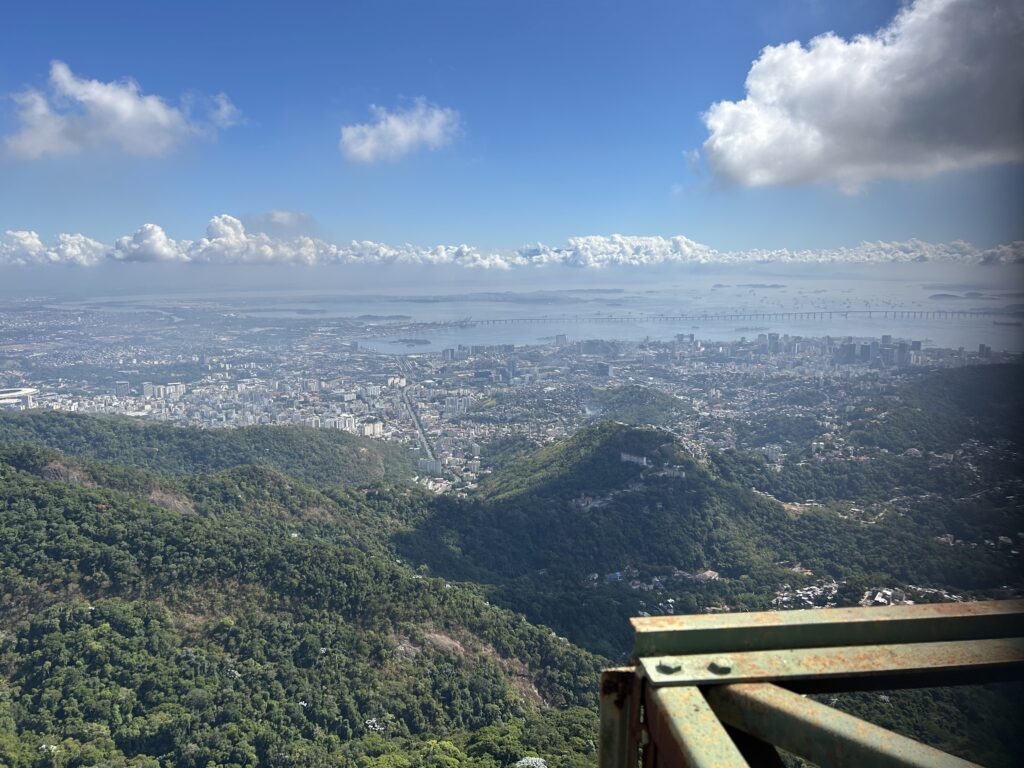
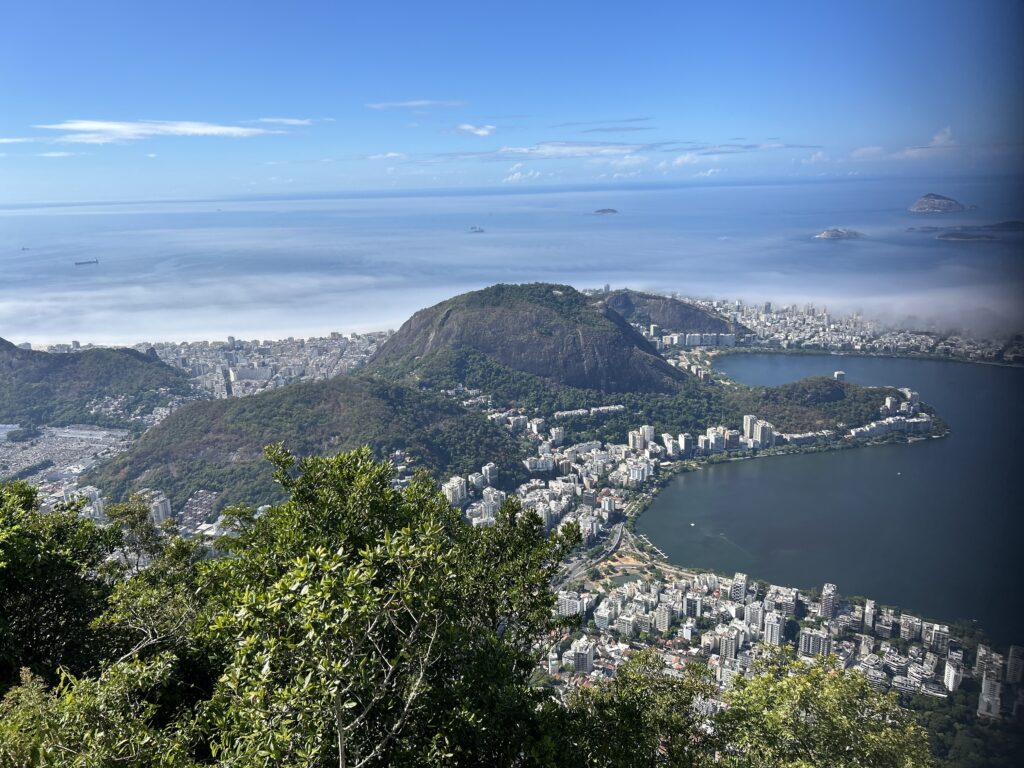
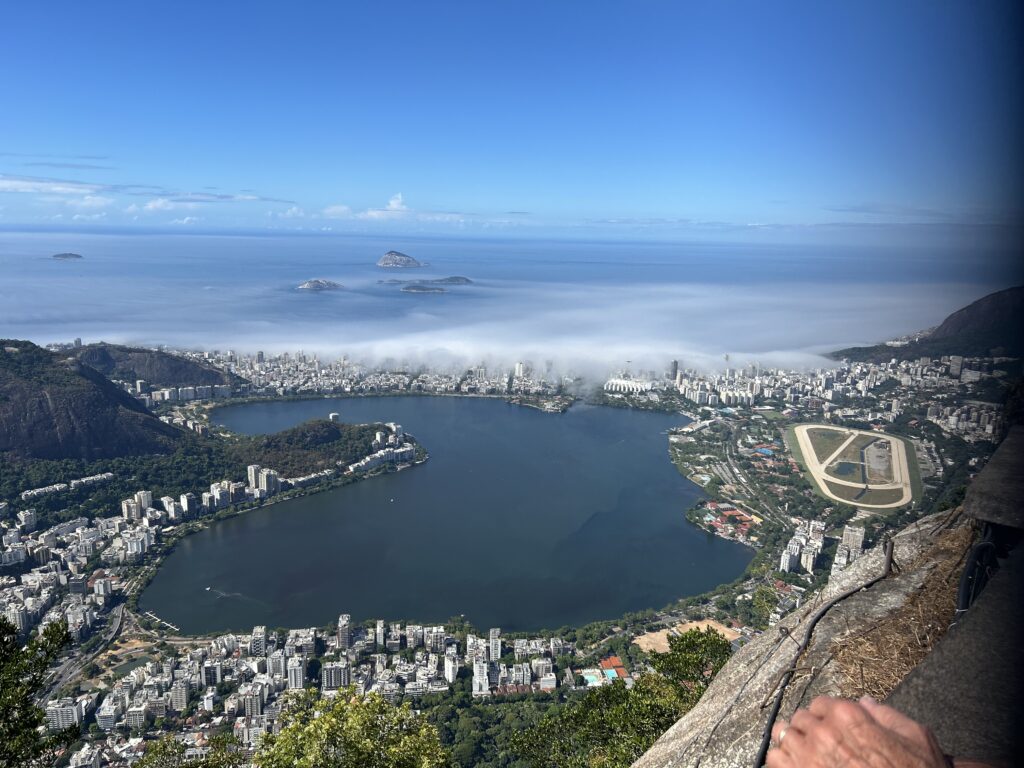
Maracanã Stadium
The stadium, originally named after journalist Mário Filho, opened in 1950 to host the FIFA World Cup. More recently it hosted the 2014 World Cup and 2016 Summer Olympics. The popular name, Maracanã, is after the Rio Maracanã that runs through Rio in this neighborhood. It is the largest stadium in Brazil. While it is primarily used for soccer, it hosts other sports events and concerts as well.

To the right is the monument “For the World;’s Football Champions” or the “Bellini Statue”. It is a common meeting place in Rio. It was created by artist Matheus Fernandes, from the Municipal Institute of Fine Arts. It honors the captain–Hilderaldo Luís Bellini–and team that won Brazil’s first World Cup in Sweden in 1958.
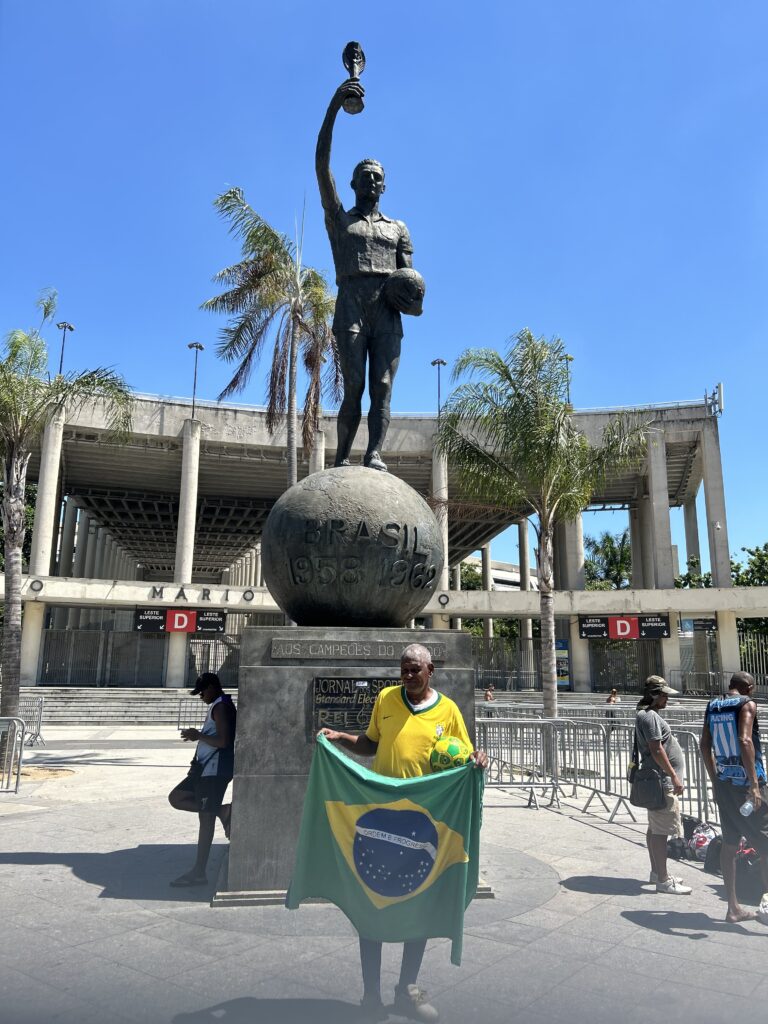
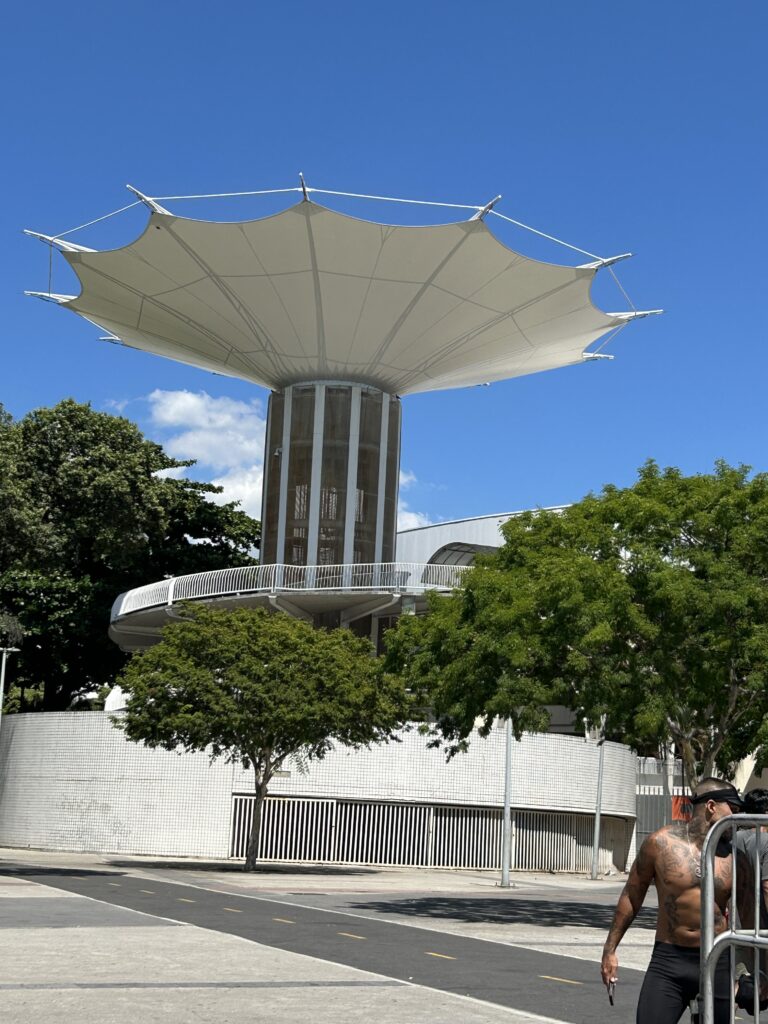
The third picture is of a rainwater harvesting system that collects rainwater for the field and restrooms. This was added for the 2016 Olympic Games.
Metropolitan Cathedral of Saint Sebastian
From the Stadium we went to the Metropolitan Cathedral of Saint Sebastian. Situated in the very center of Rio, it was designed by Edgar de Oliveria da Fonseca in a modernist style inspired by Mayan pyramids. It is shaped like a cone with a cross in glass at the top. The four floor-ceiling windows meet at the cross. Unlike the pyramids of the Maya, it has a circular and conical shape to signify the equidistance and proximity of the people to God, It stands 246 ft. high.
As we stepped inside, we were met with light from the four rectilinear stained-glass windows that are each 210 feet from floor to ceiling. One faces each direction, extending from the sides of the cross at the top. The windows depict scenes from the life of Christ and the saints. Around the nave are statues and paintings. It is an awesome place.

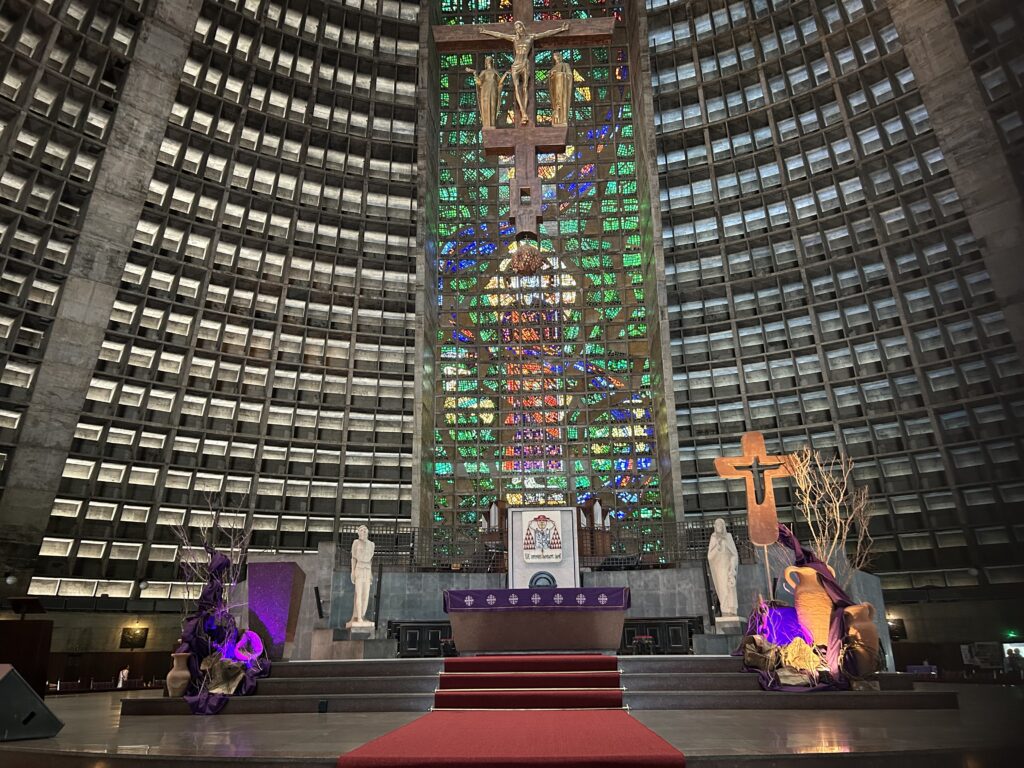
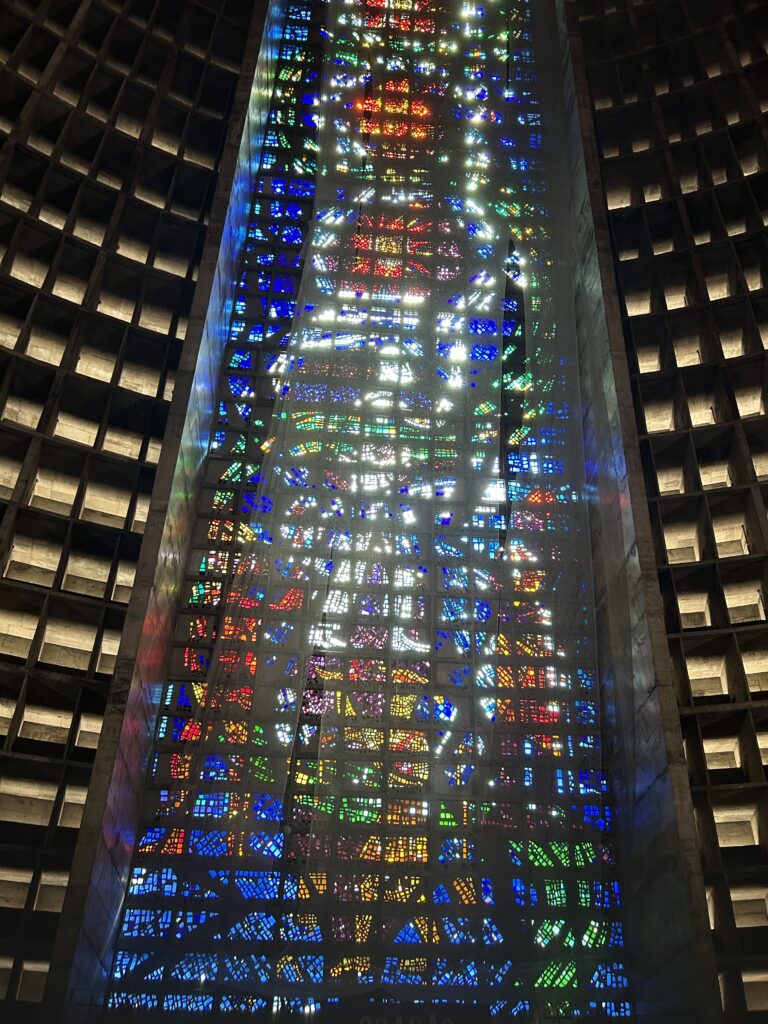
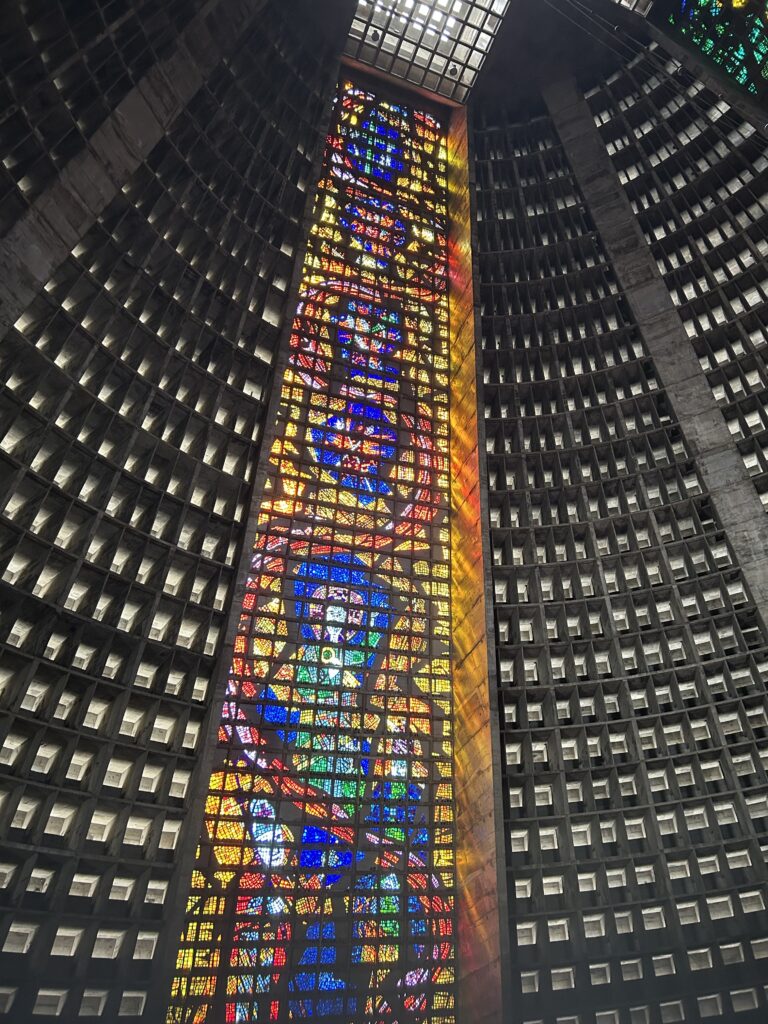
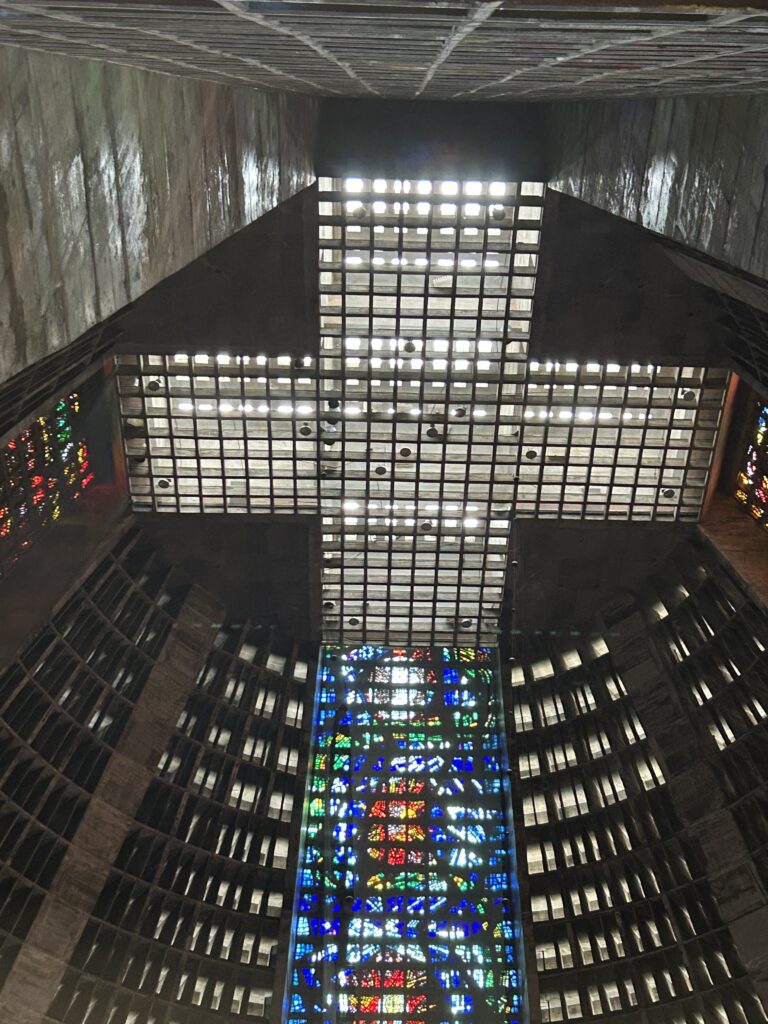
In addition to the glass, statues and artifacts are incorporated into the cathedral nave that can hold 20,000 people standing,.
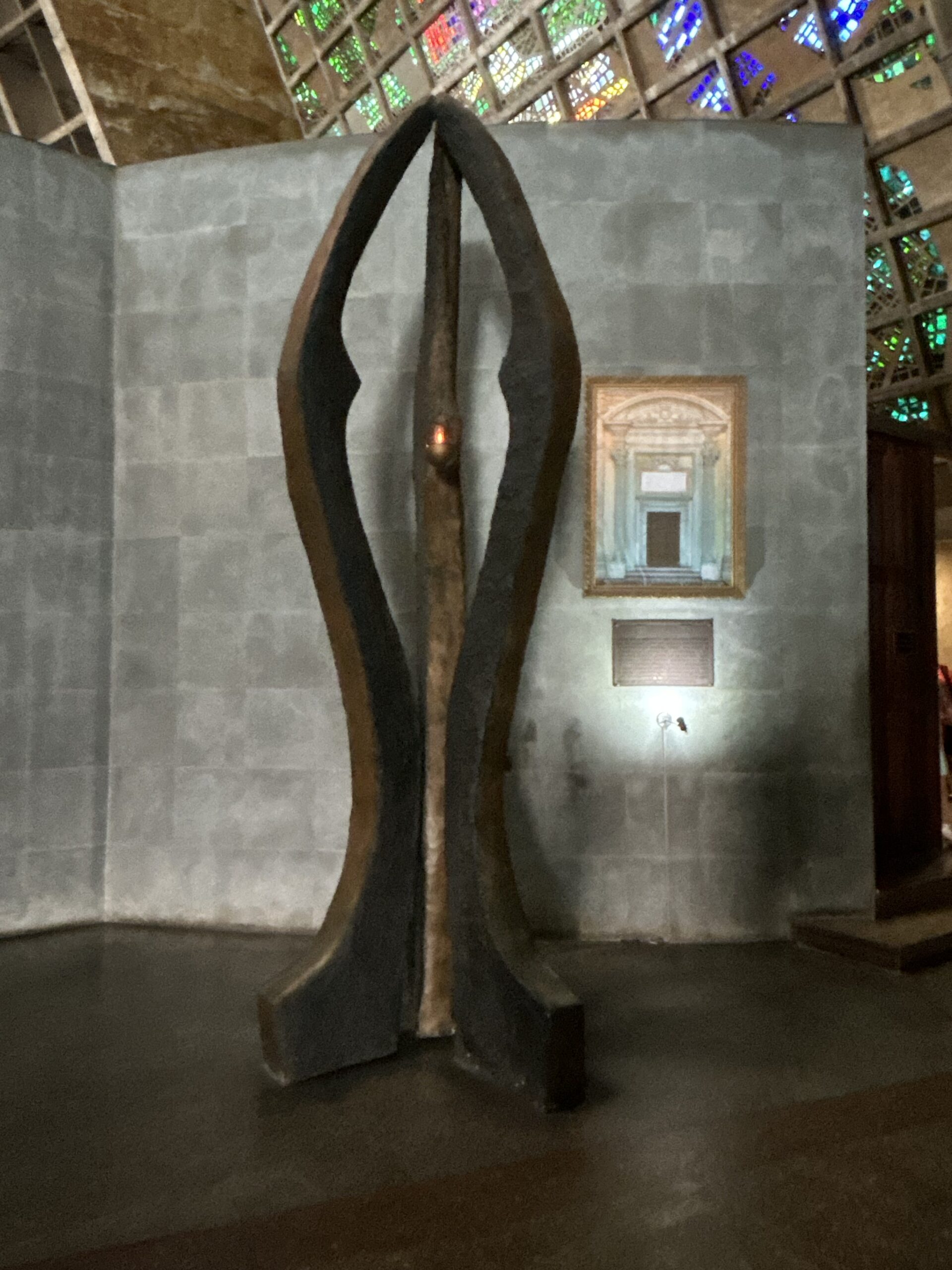
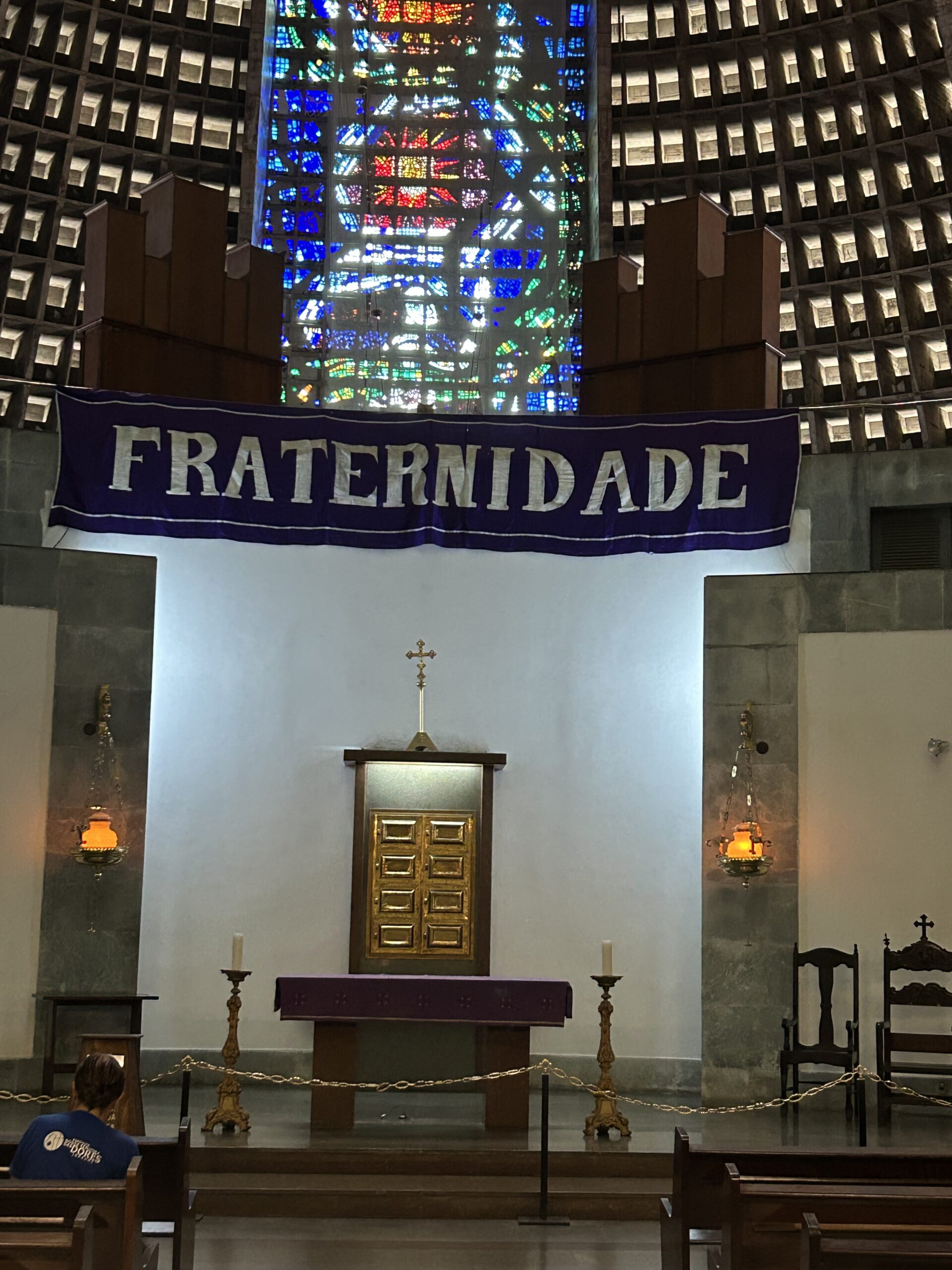
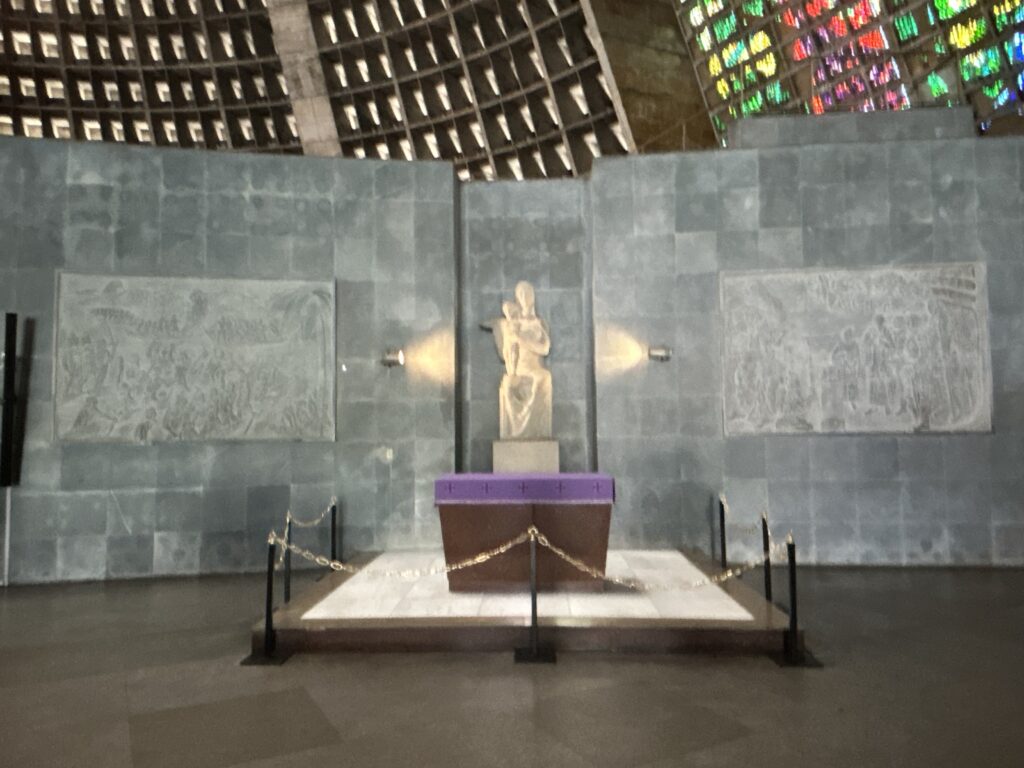
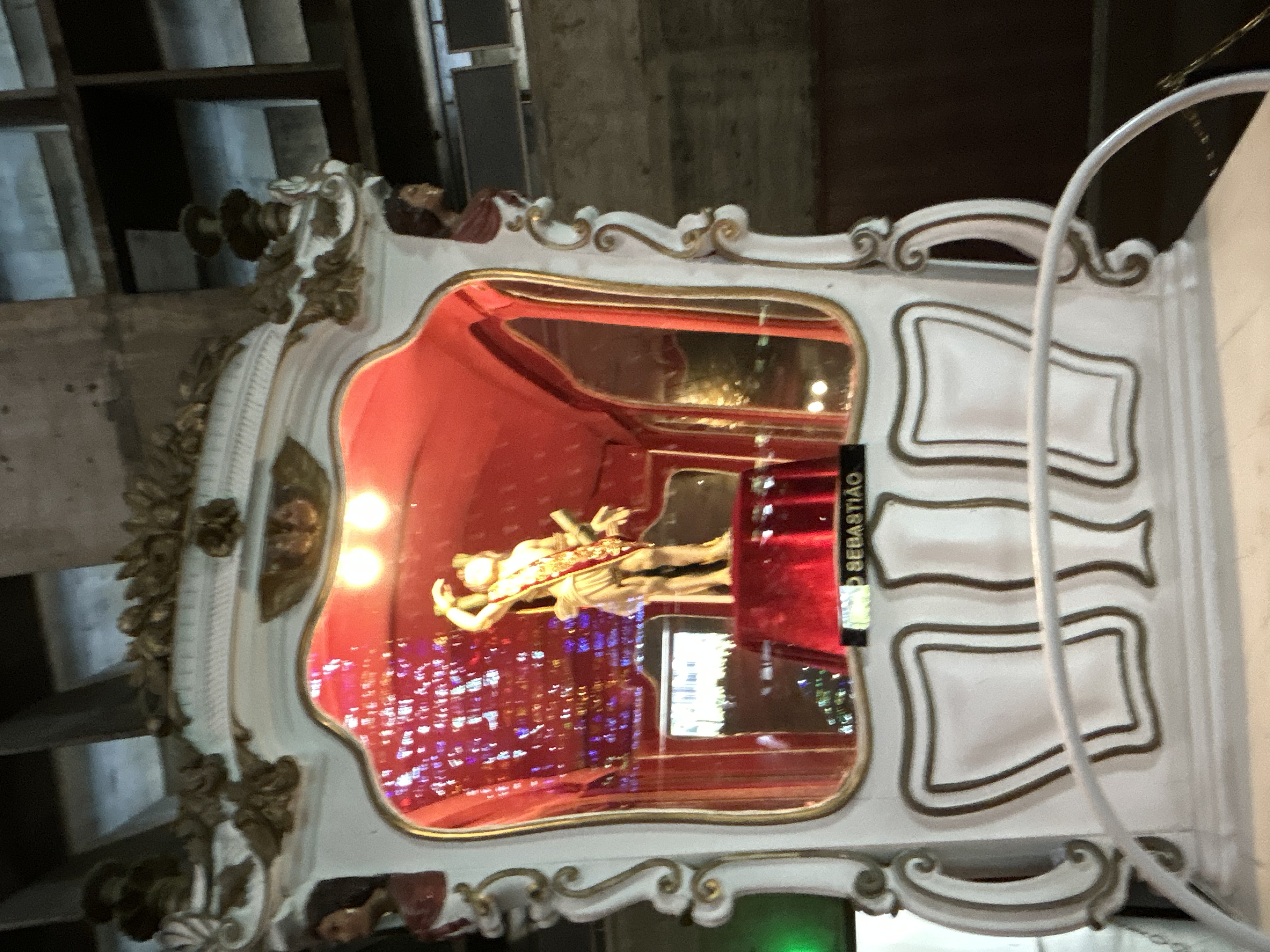

Truly this is an inspiring place to visit and worship.
Carnival
As we traveled from place to place, we saw elements of the Carnival. A big concluding parade was to be held in the eveniing. Here are some pictures I captured as we passed by the stadium where the parade will be.
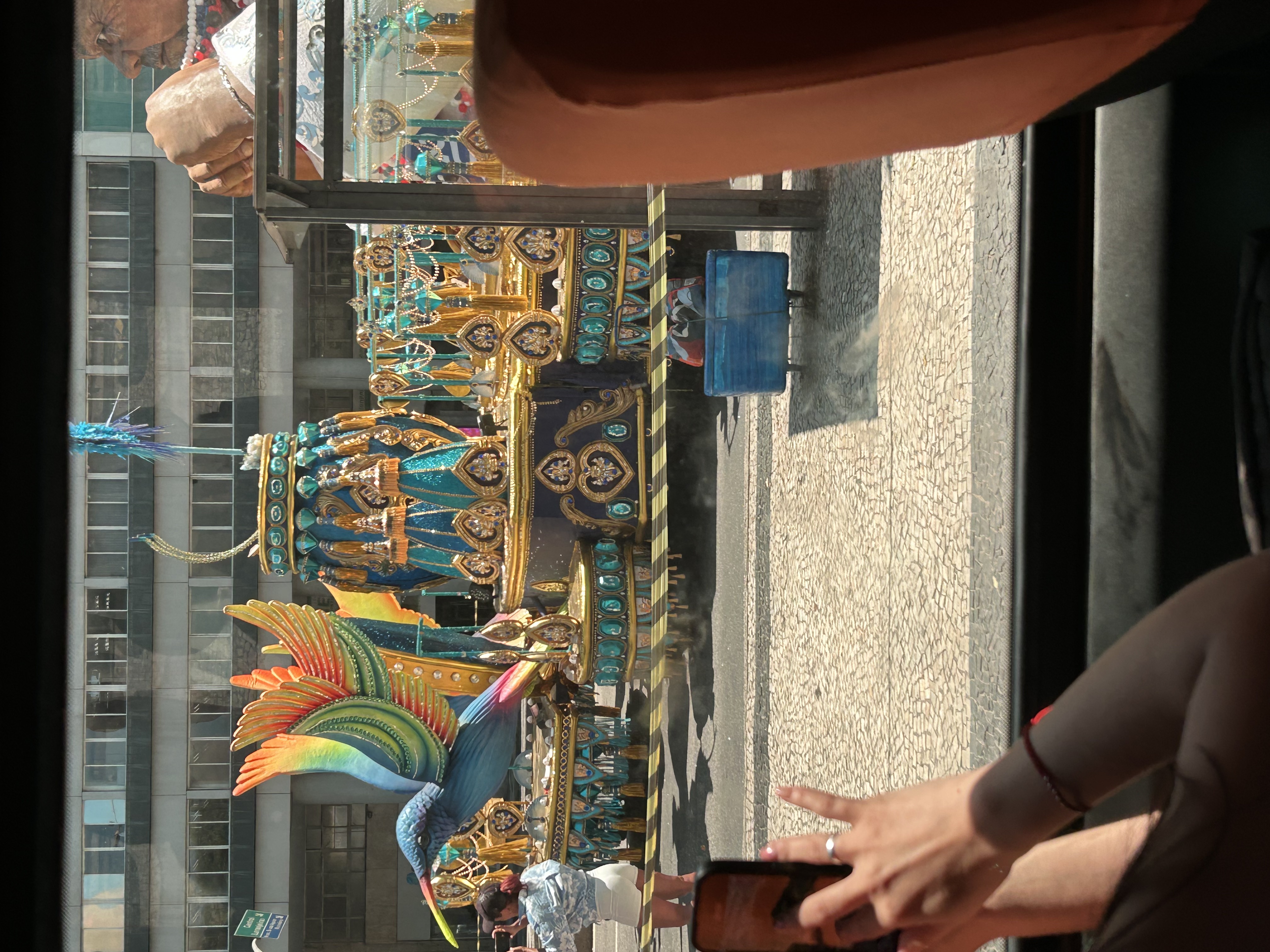
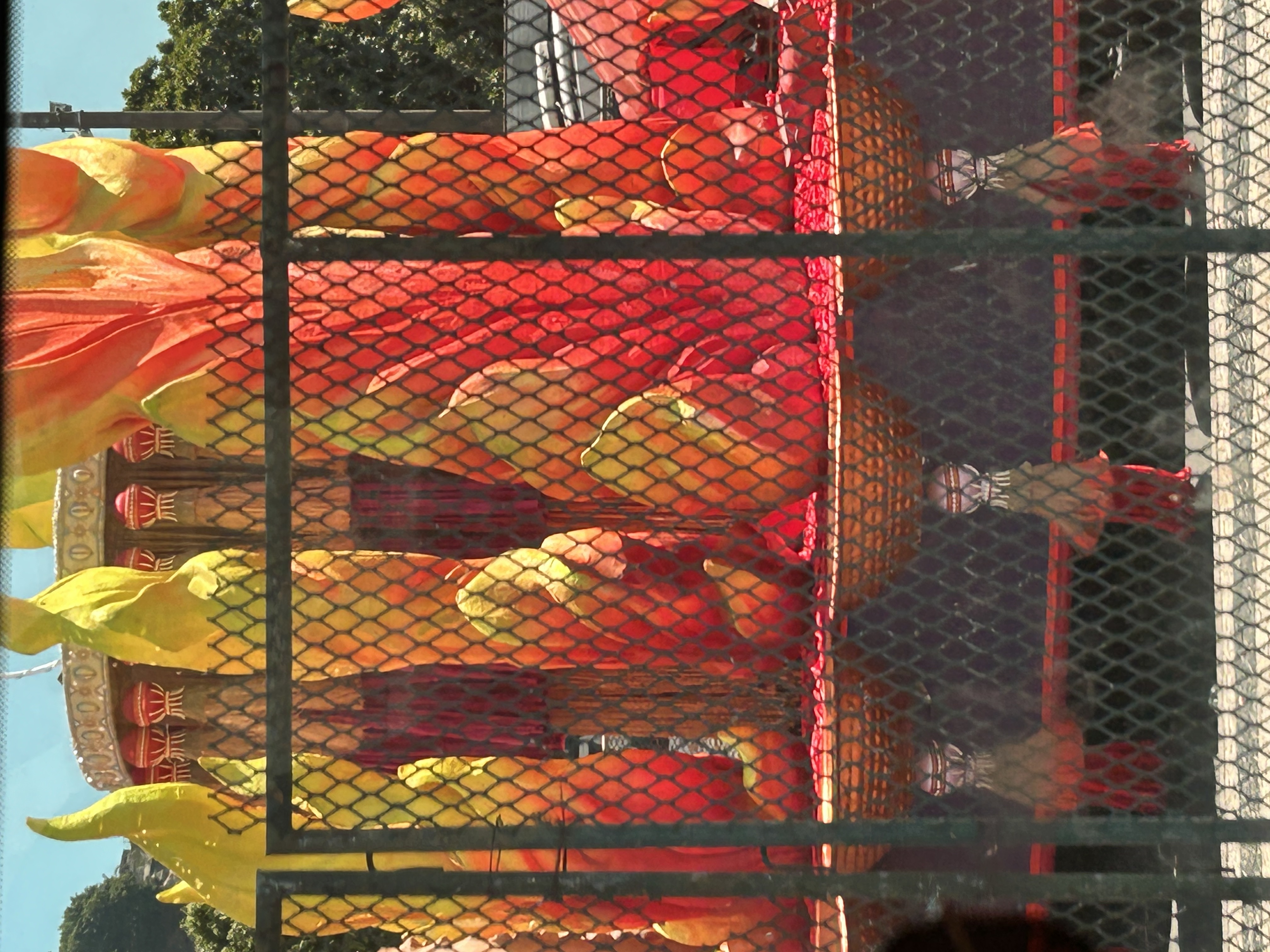
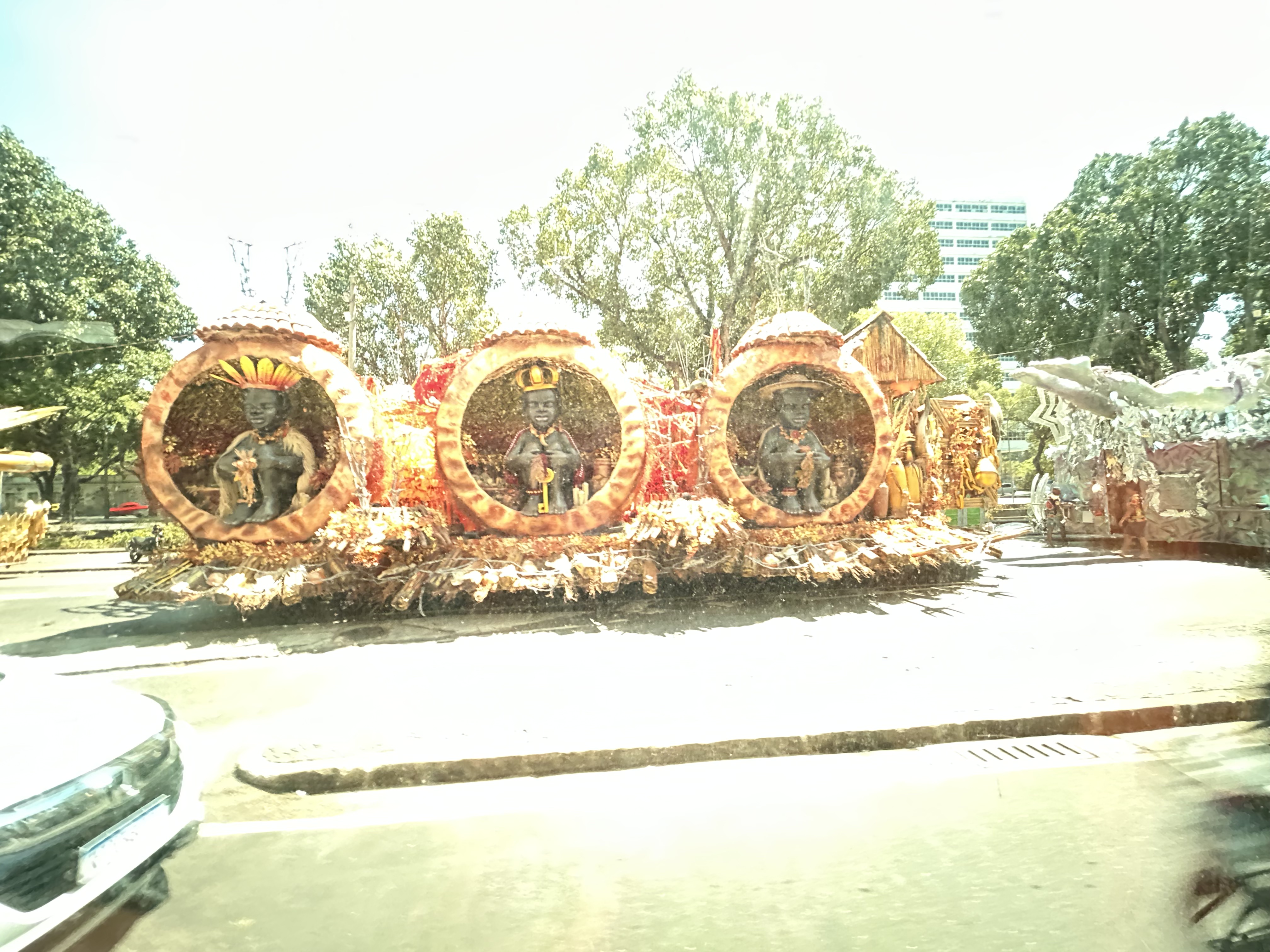
Selerón Steps
From the cathedral, we went to the Selerón Steps. Situated in the Lapa neighborhood, the locals call them the Lapa Steps. They were created by the Chilean artist Jorge Selarón. There are 215 steps covered in over 2000 tiles collected from 60 countries around the world. They are interesting to examine. From here we went to a cafeteria for lunch and then to our final site: Sugarloaf Mountain.
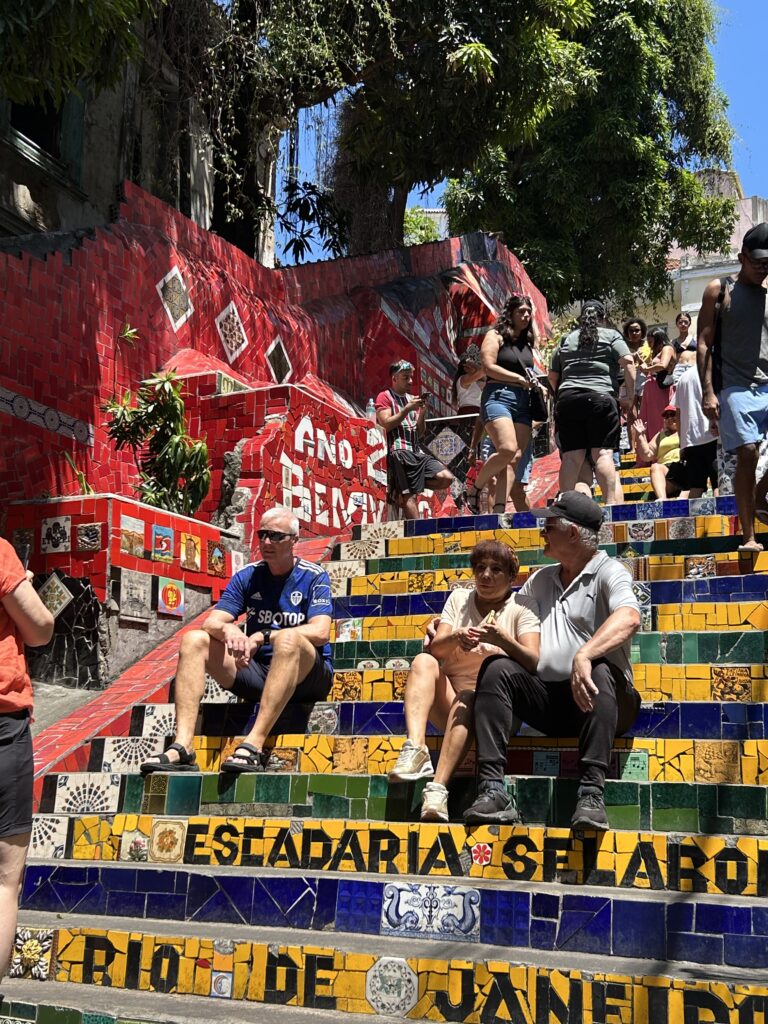


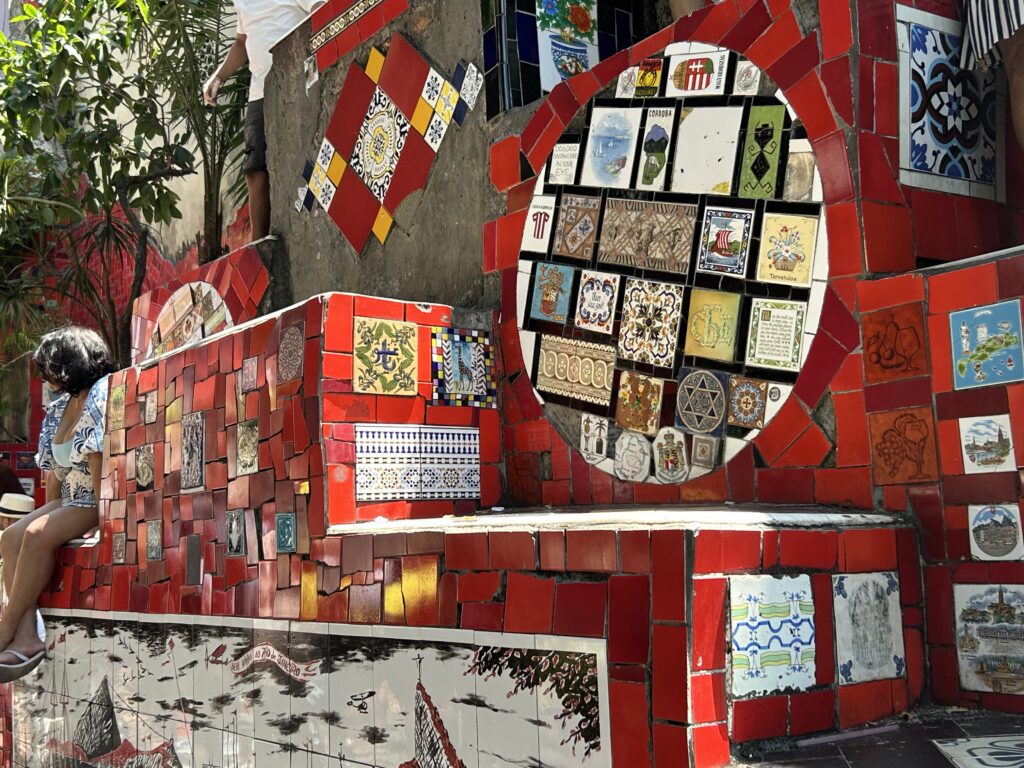
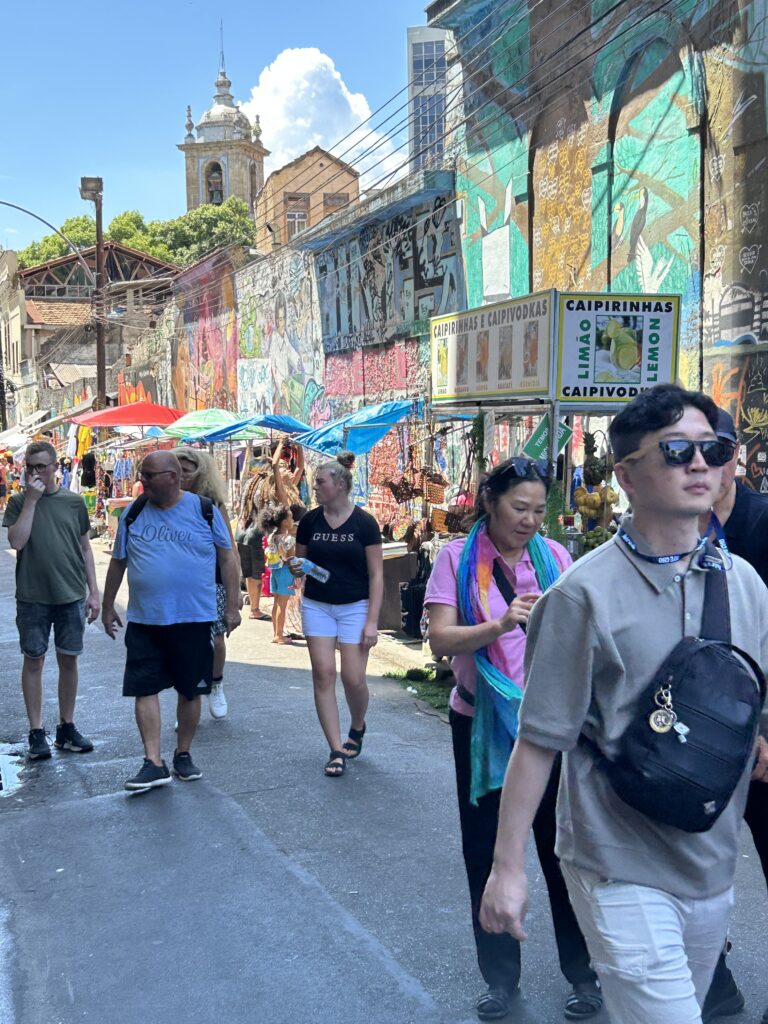
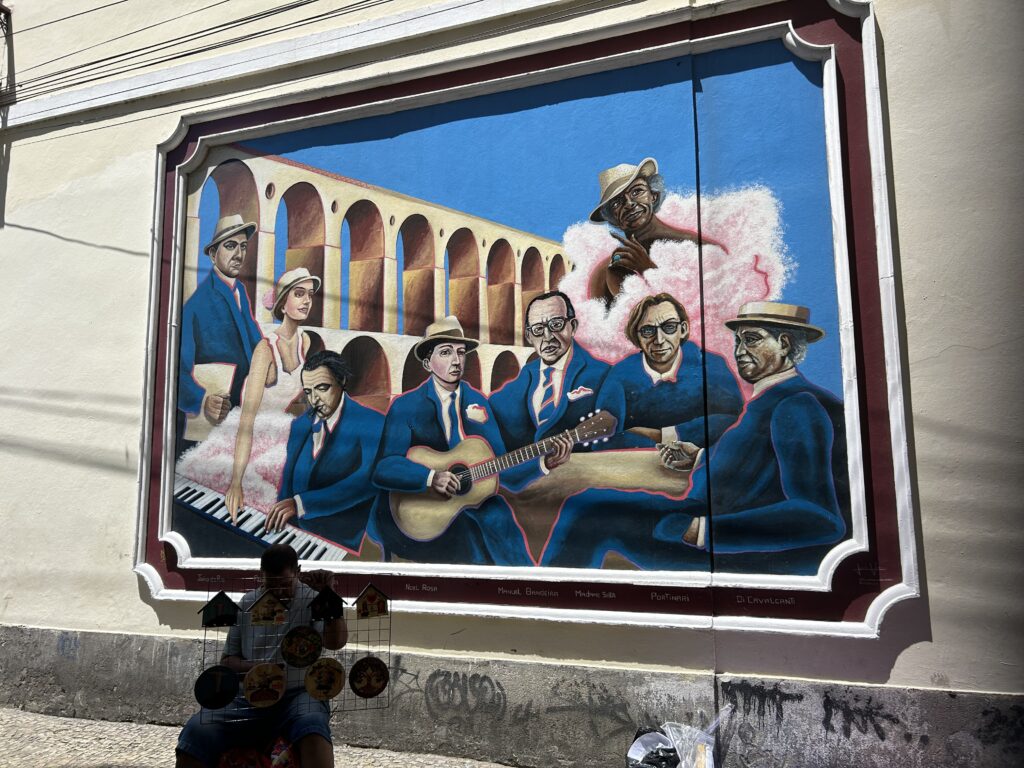
Sugarloaf Mountain
Sugarloaf Mountain is a peak that sits opposite Christ the Redeemer. It is 1,299 feet tall and was named Pão de Açúcar because it resembled a sugarloaf. It is a UNESCO historic site. The mountains that surround Rio are monolithic granite and quartz mountains and rise straight from the water’s edge.
To reach the top, we had to take two cable cars, first installed in 1912. The first goes to the top of Morro da Urca. There we had a short walk to the second cable car. Enroute, we saw a capuchin monkey. The second cable car took us to the top of Sugarloaf. At the top, we had 360 views of the city and Guanabara Bay on one side and Copacabana Beach on the other. From the peak, you can see Christ the Redeemer as well.
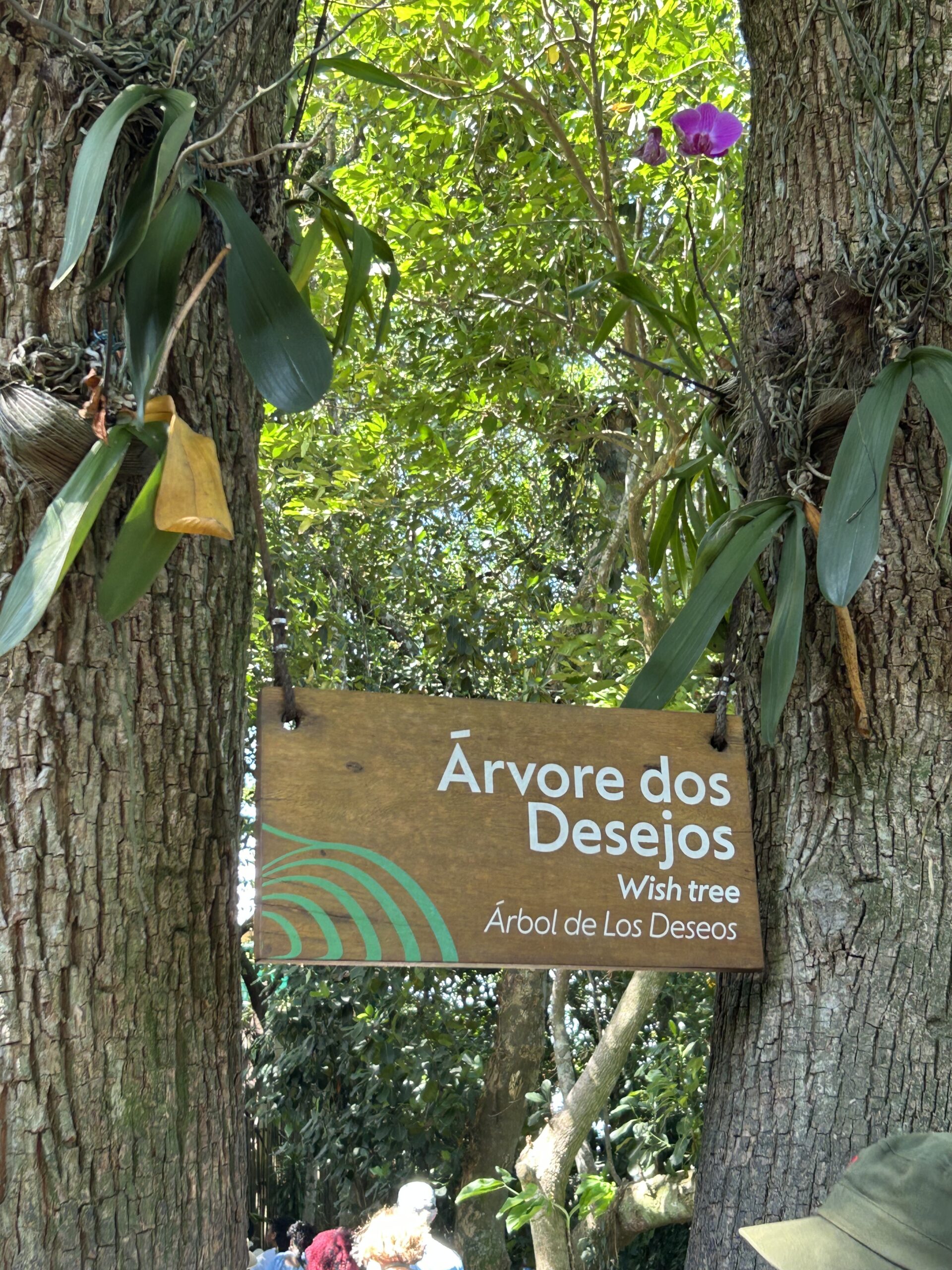
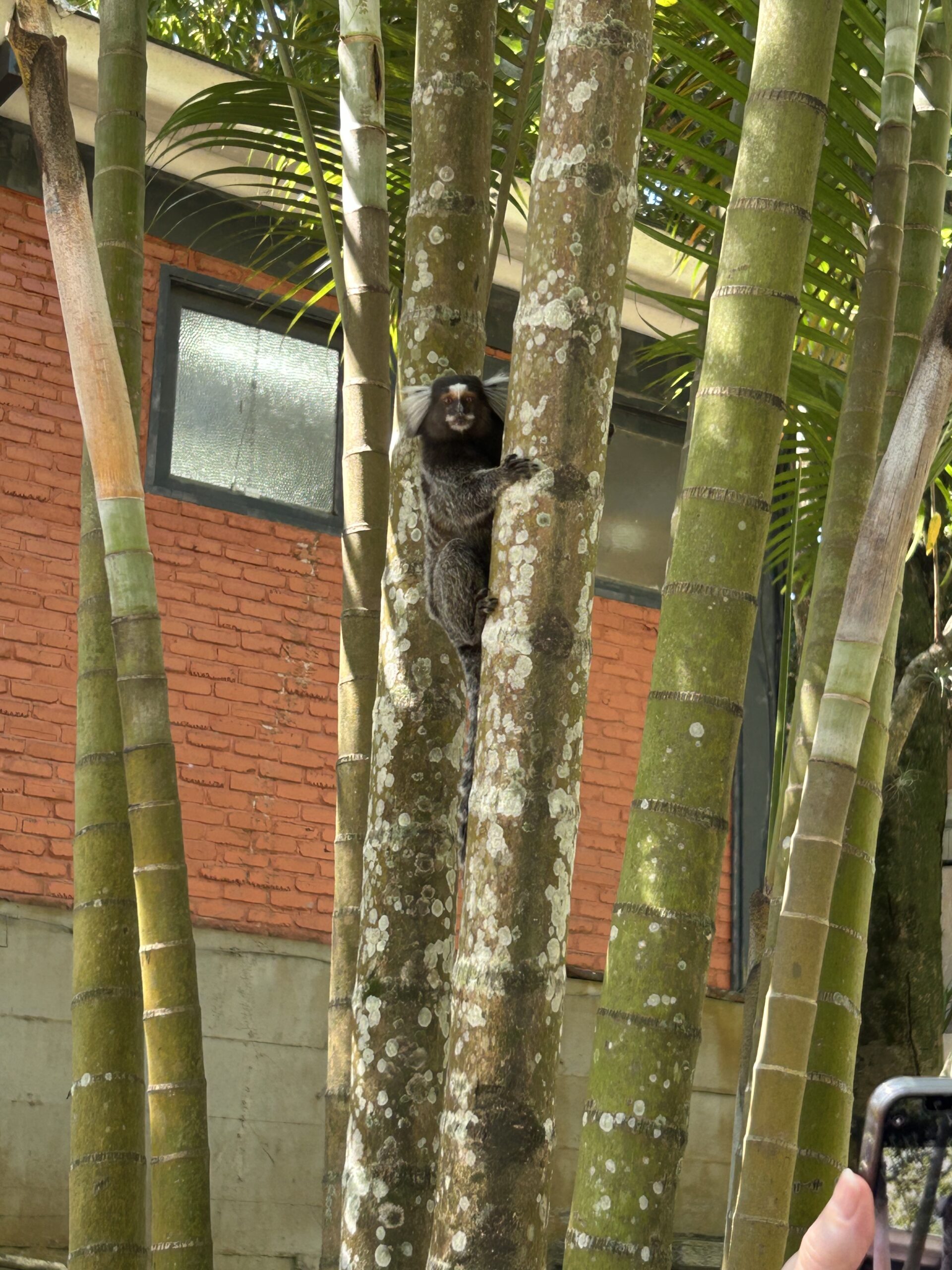
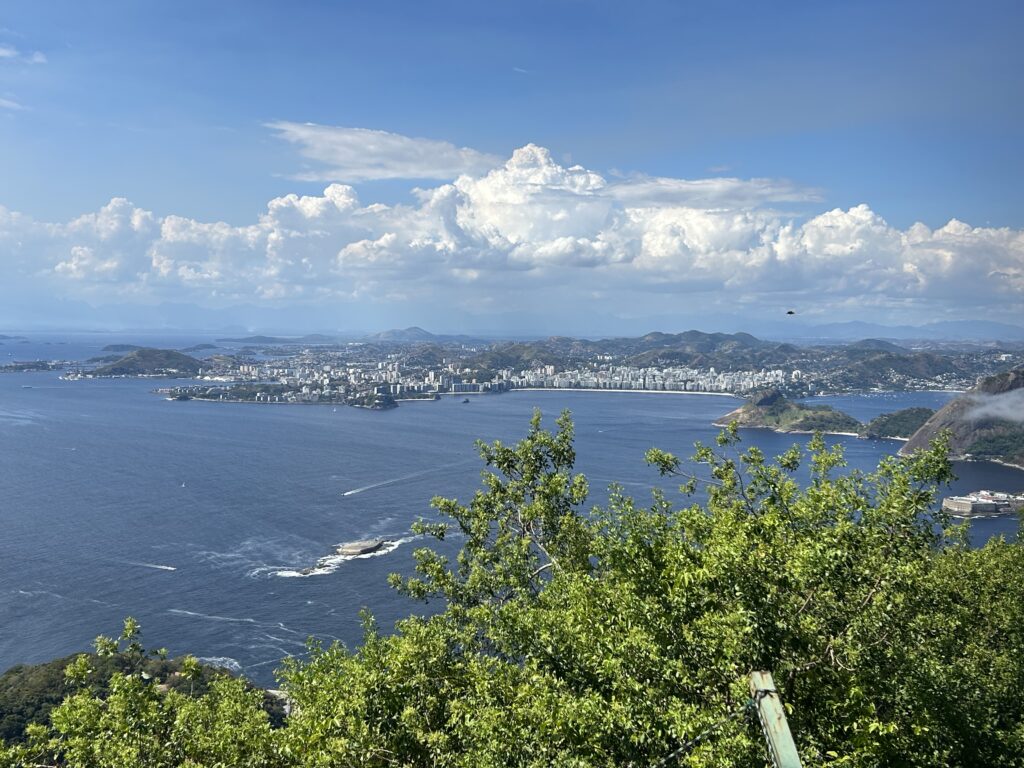
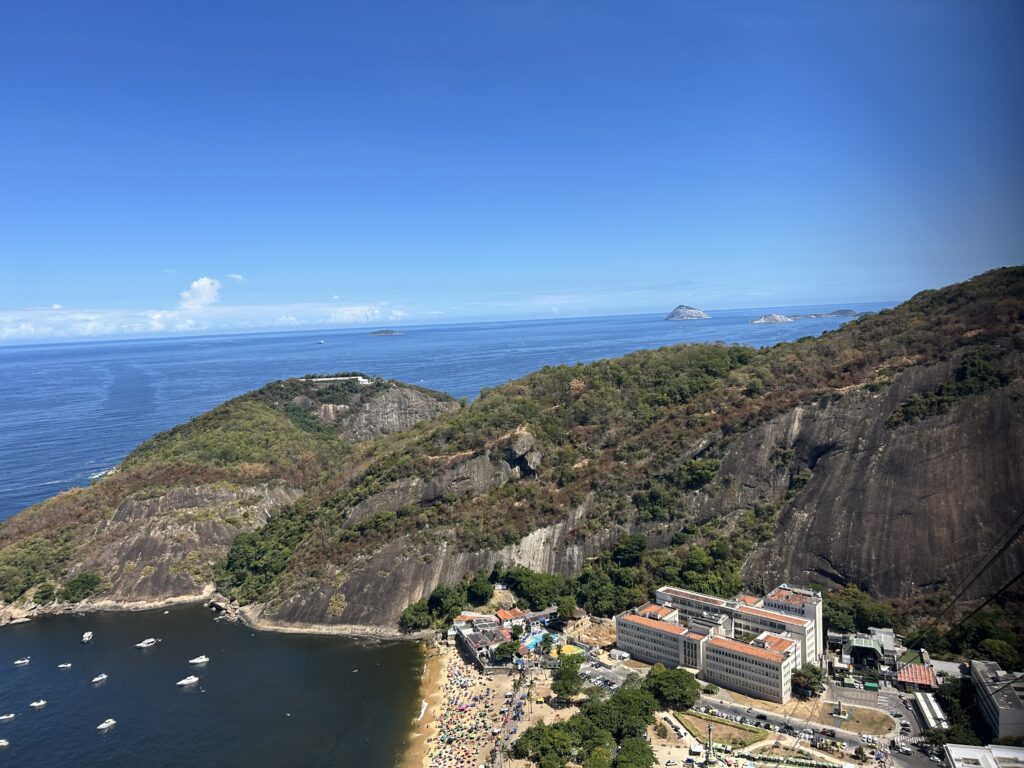
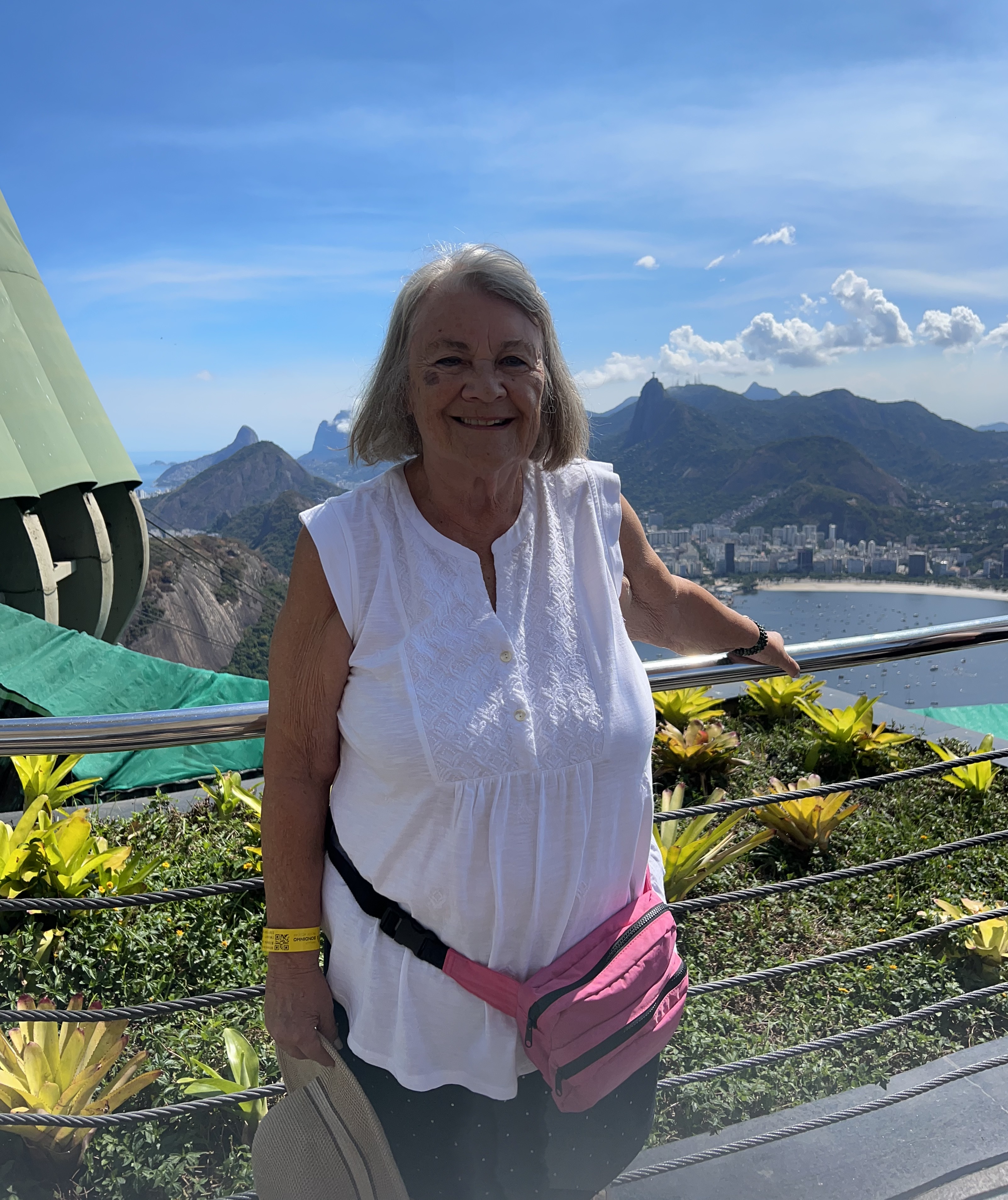
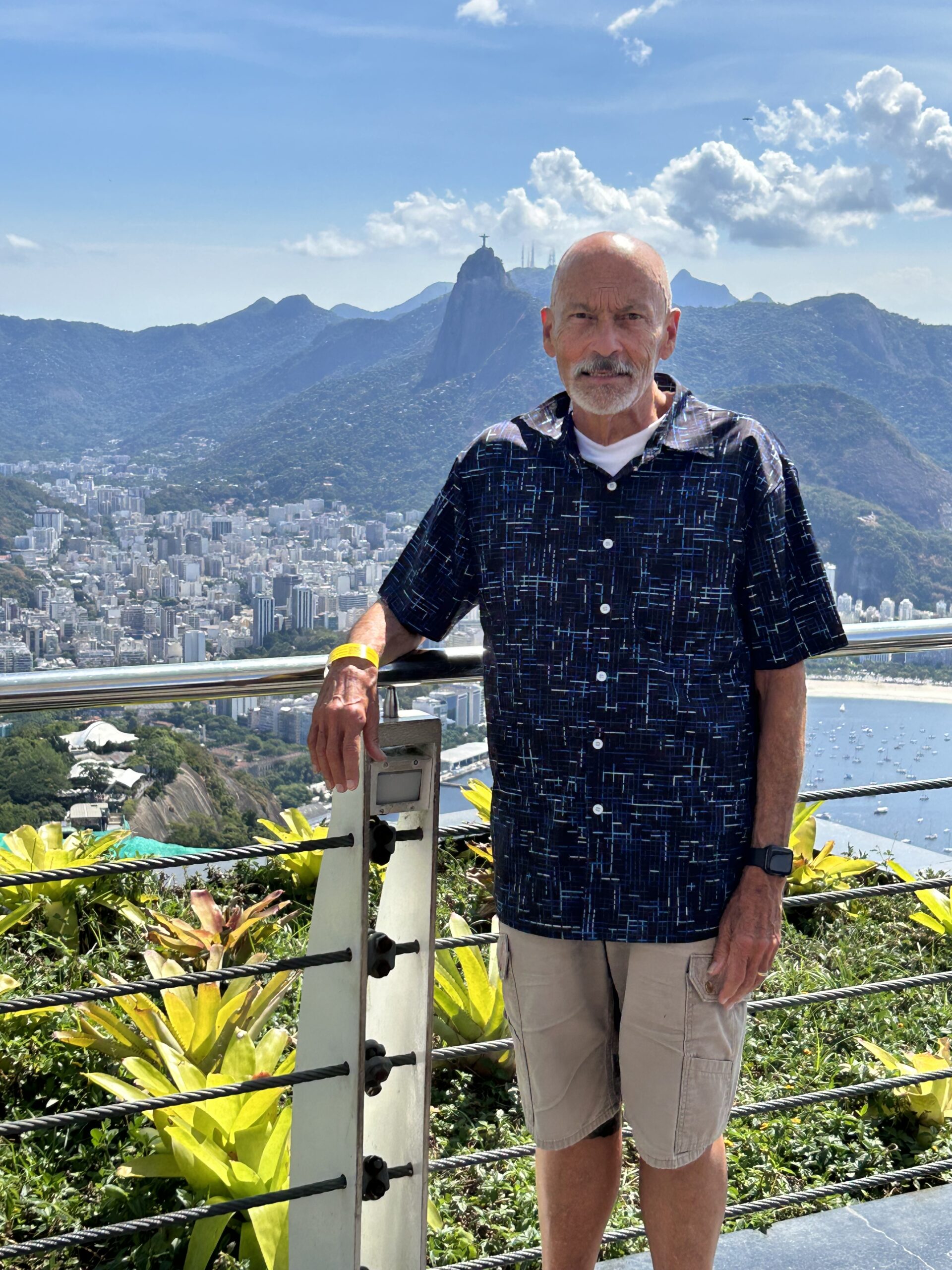
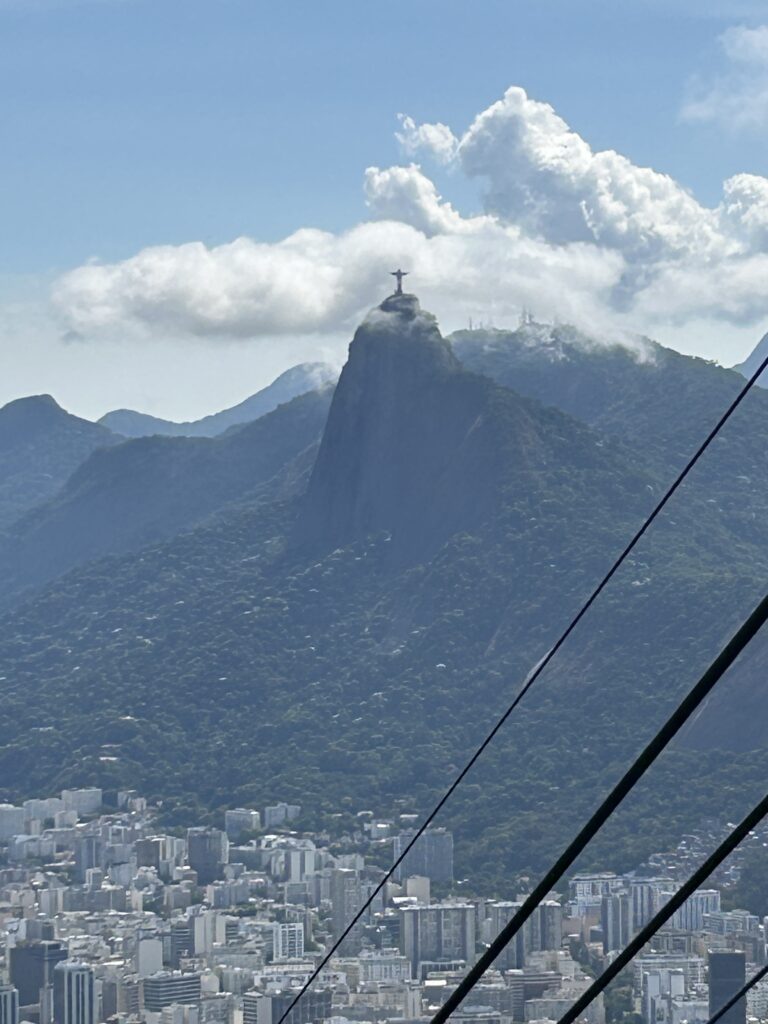
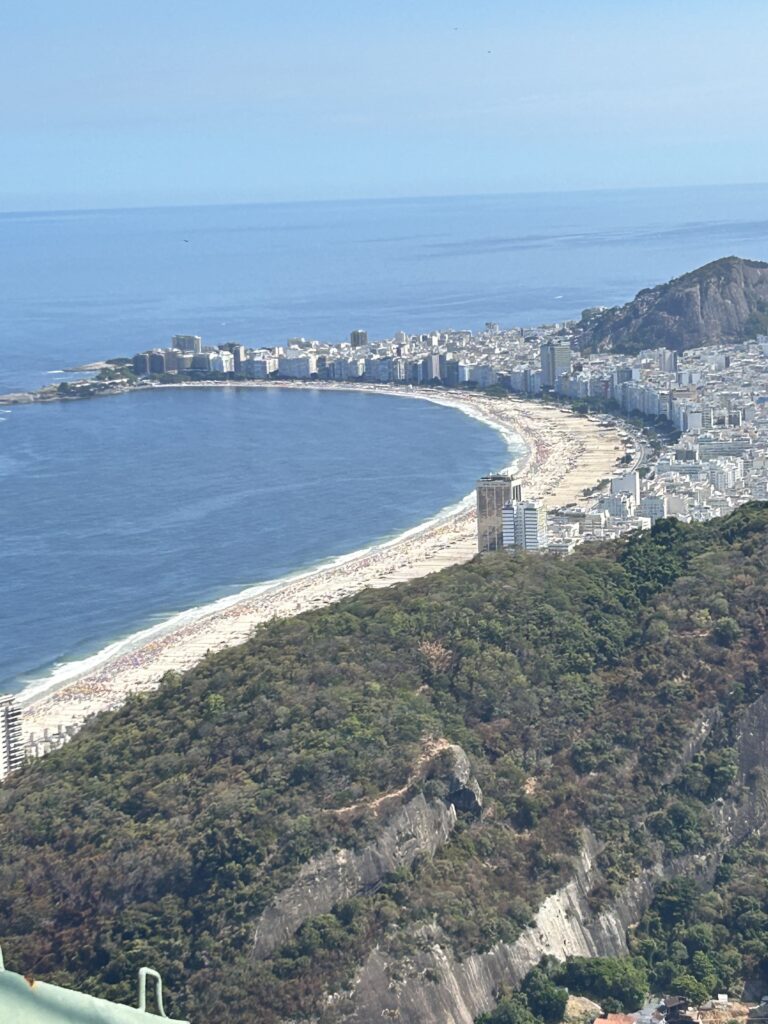
As you can see. The views of Rio are fantastic from this point. We walked around the top of the tram for awhile to absorb all that we had seen. It was a spectacular day.
Dinner
Our first dinner was at Sindicato Do Chopp around the corner from our hotel. The bellman at the hotel recommended it. We had a wonderful dinner, Parrihada; it was a platter of fish, prawns, calamari, octopus, vegetables, and rice, prepared at our table. Even though we shared one order, it was enough for at least 4. Sitting at a cantina, across the street from Copacabana Beach, eating wonderful Brazilian food was idyllic. A great way to end the day!


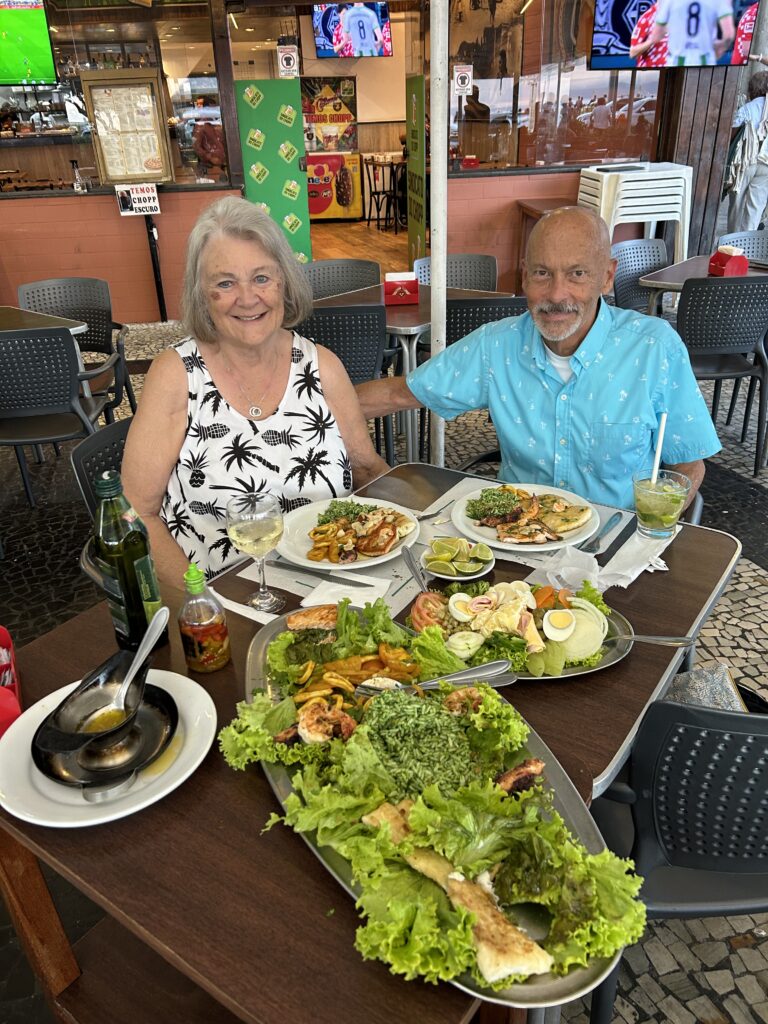
Our second dinner was at another local cafe overlooking the beach on the corner outside our hotel: Gatorade de Copacabana. There we ordered the Mixed Barbecue, which was recommended. Like the previous night, it was prepared at our table, and though we shared a meal we couldn’t begin to eat it all.
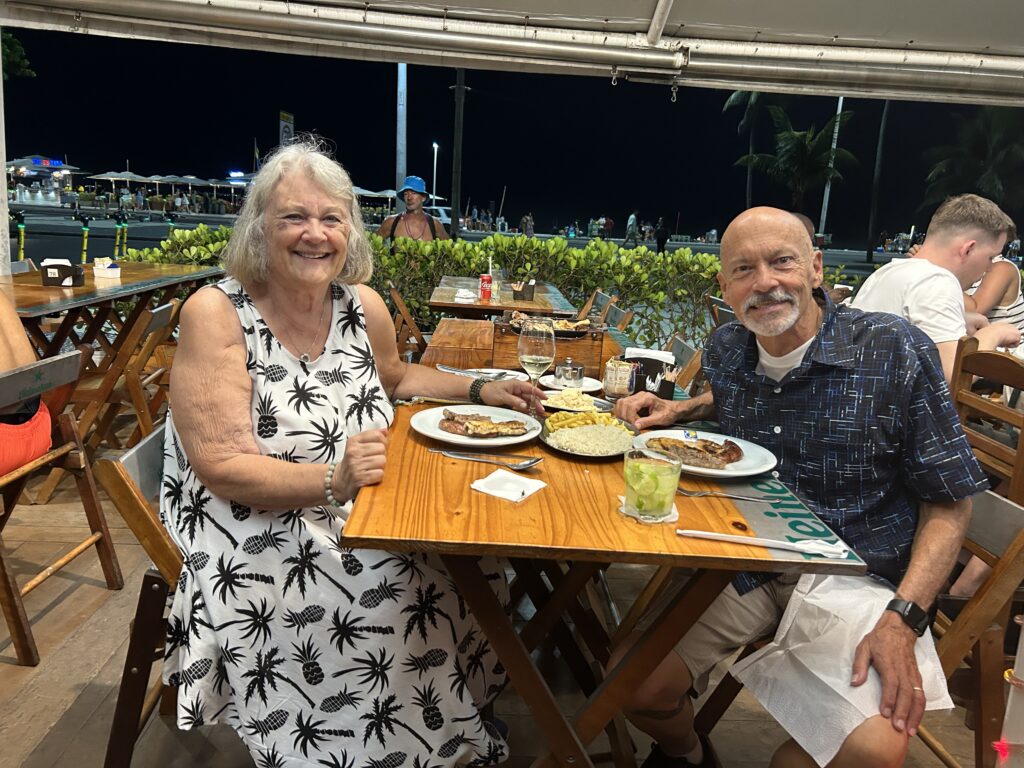
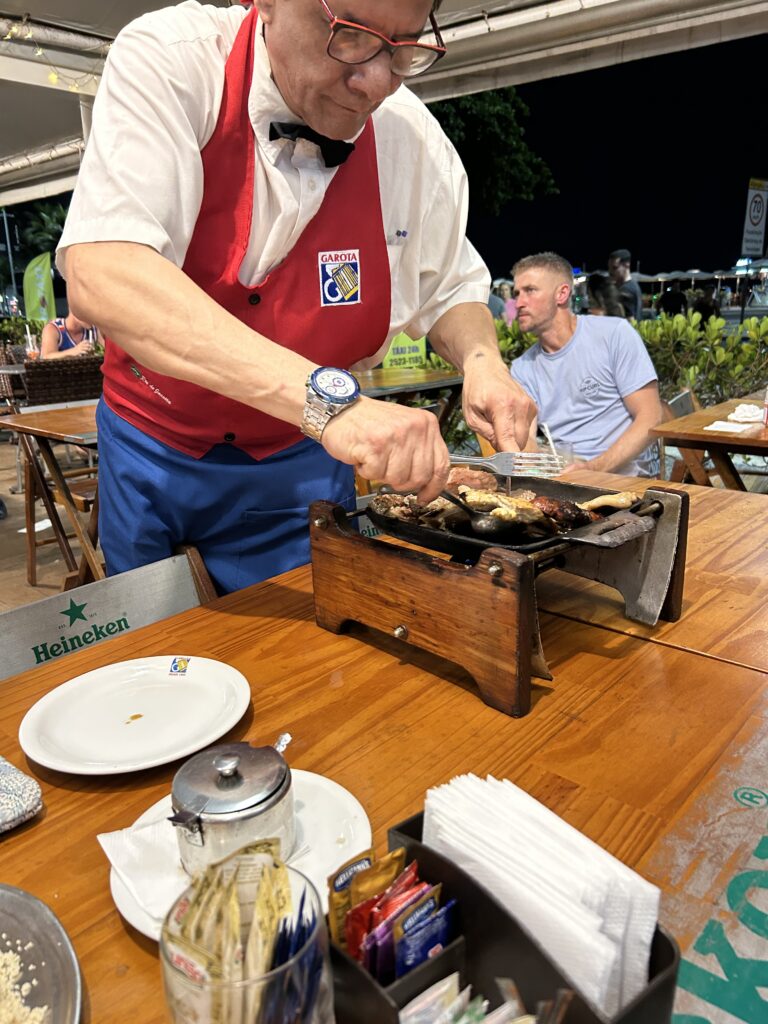
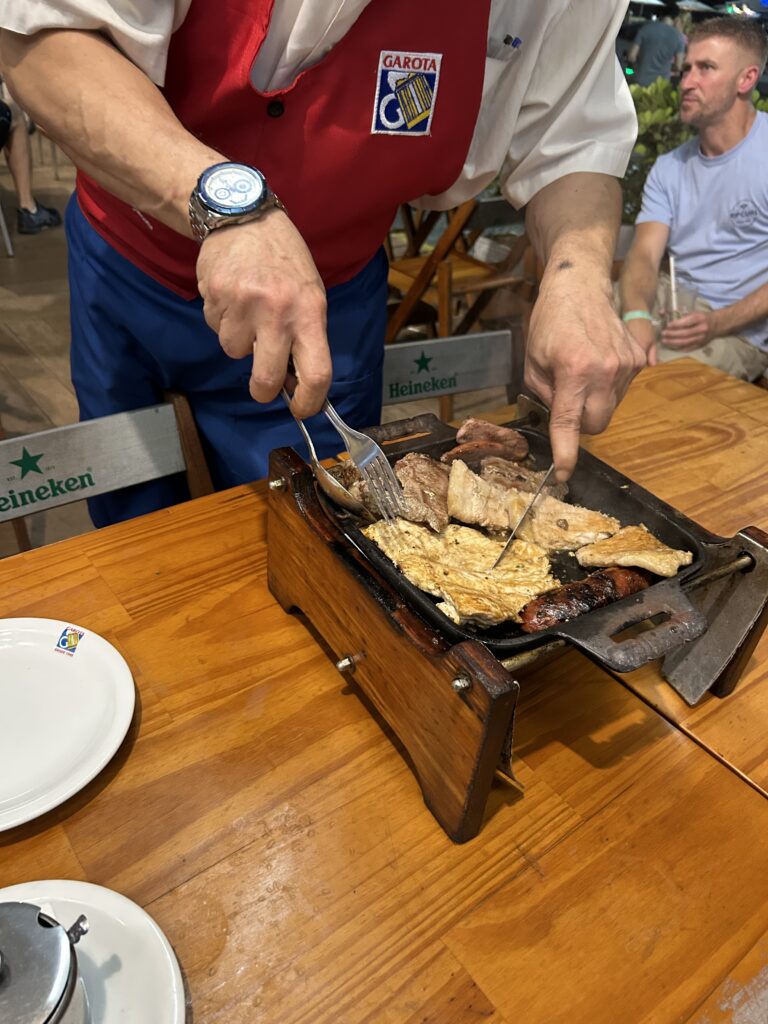
Both restaurants catered to “locals” as well as tourists. It was nice to see Brazilian families and couples eating out at the same places we did. I didn’t feel like a “tourist.”
Goodbye to Rio
The next morning, most of the people slept in after the last night of Carnival. In the hotel the decorations were being stored for another year. We strolled on Copacabana Beach and noticed that one of the roadways was closed to cars so people could walk and ride bikes.
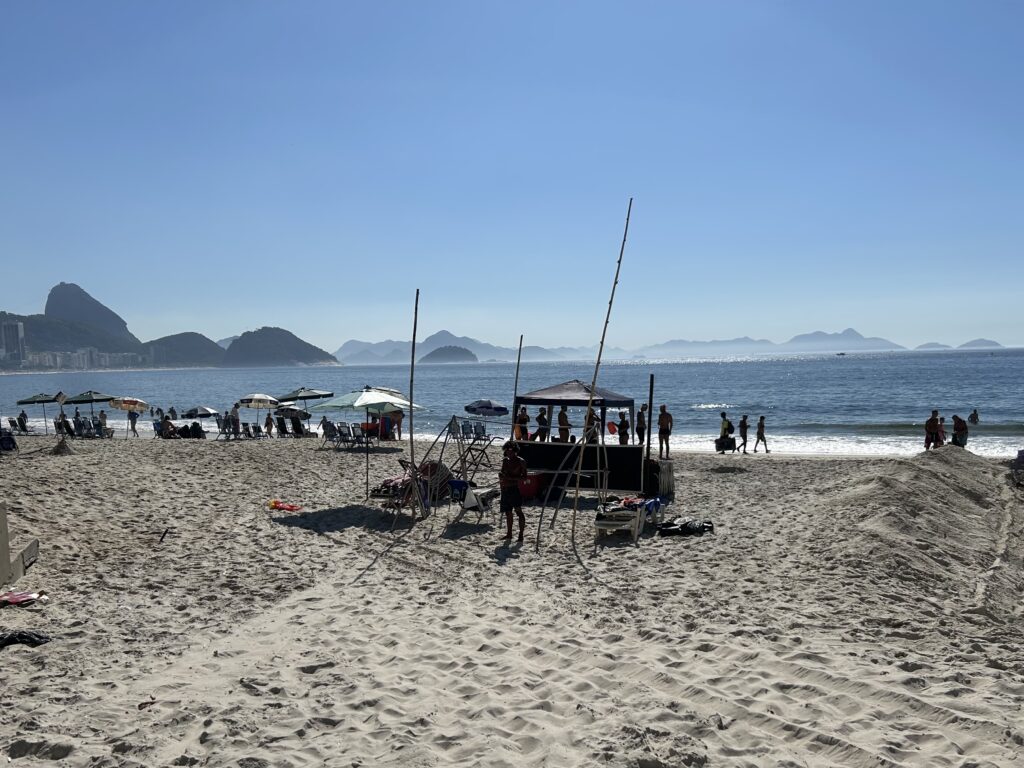
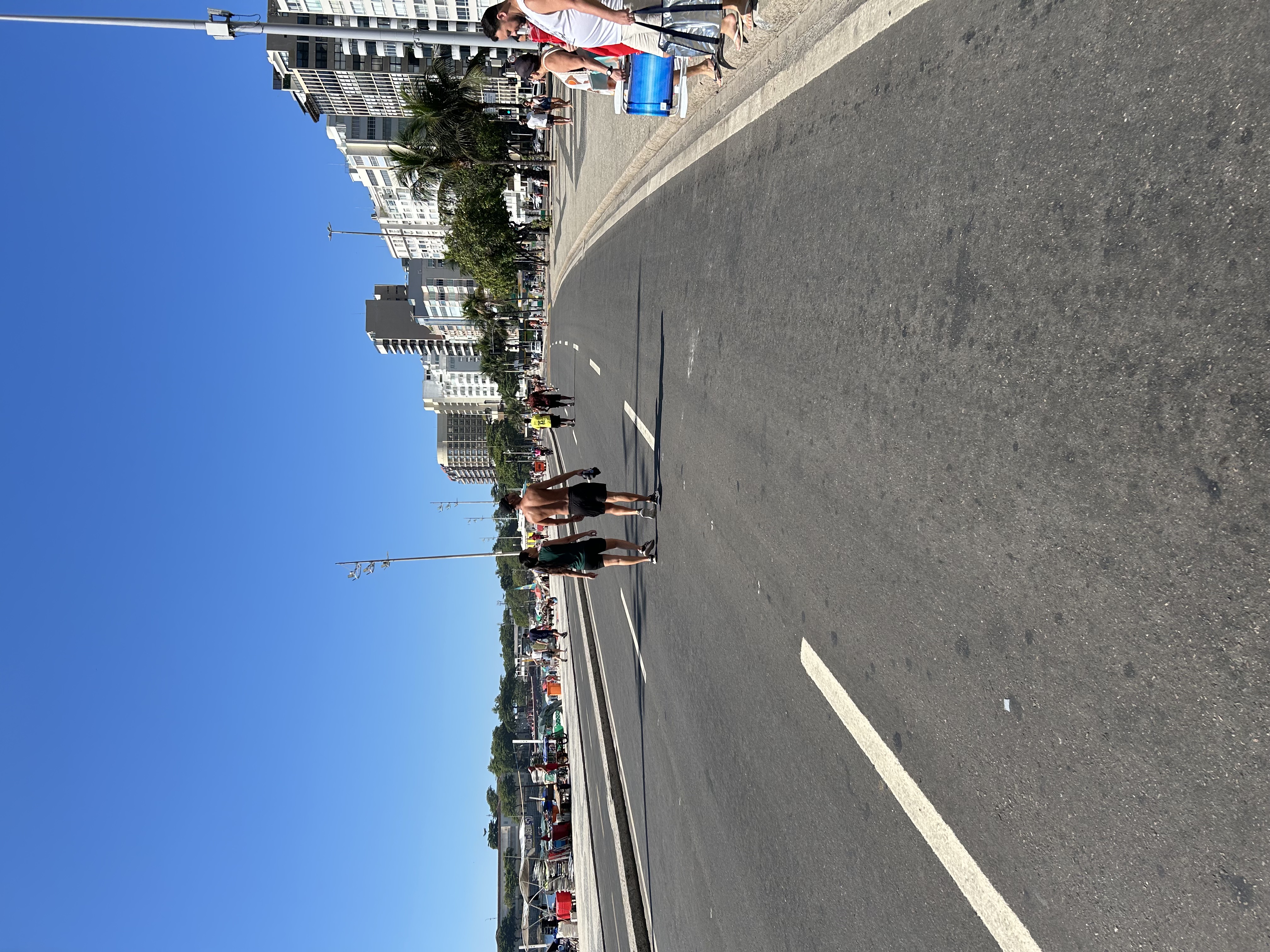

Now it is off to the ship to begin our 15 night cruise.
Leave a Reply